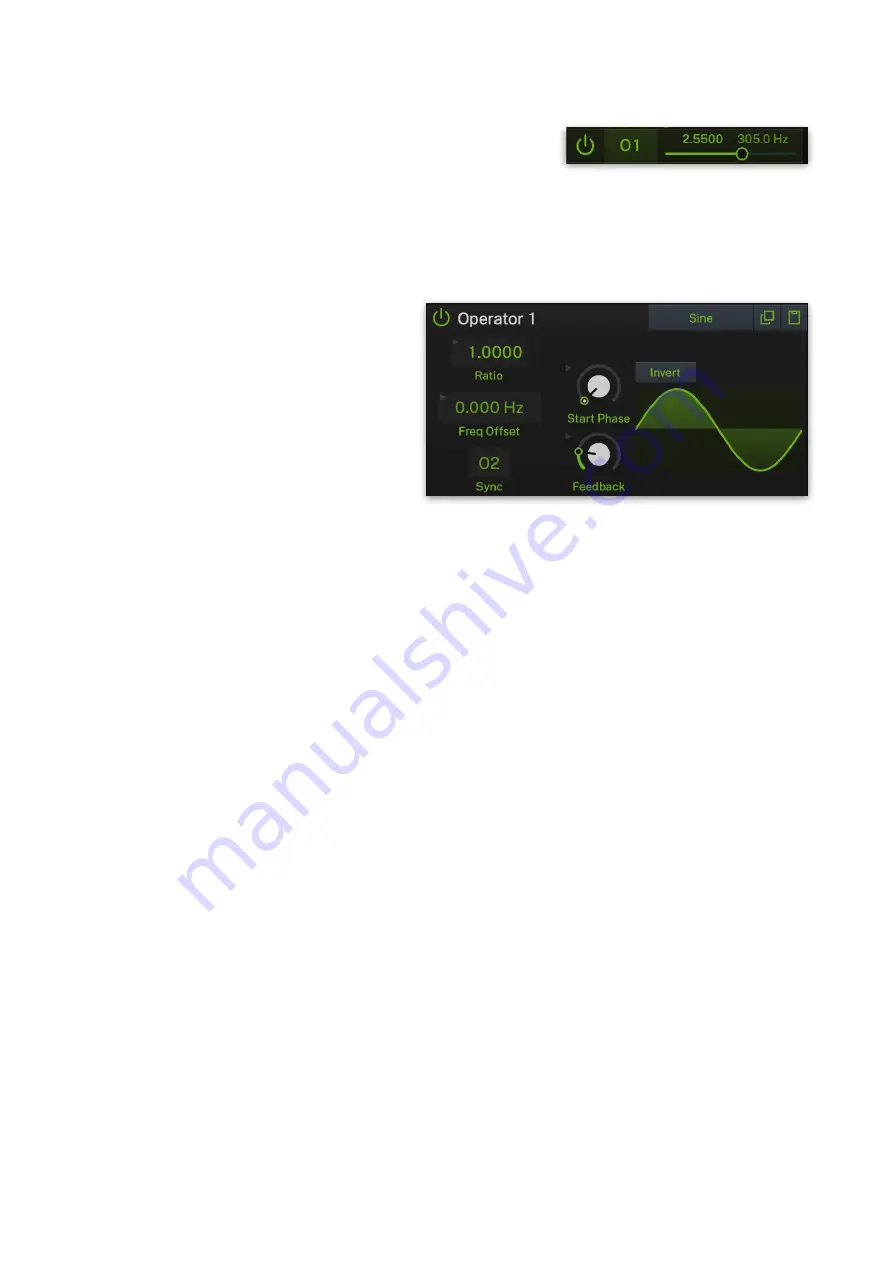
F-em User Guide
5.4 Operator 1 to 8
On these pages, you find the Operator
controls. To open an Operator page, click
on the corresponding selection field O1 to
O8 in the left section. Each Layer features
its own set of 8 operators. Because every Operator features the same
parameters, it will be described at once.
The Copy/Paste buttons lets you copy all settings from this operator
and paste it to any other, regardless of its Layer.
•
Operator On/Off
:
Click on this
button, to
activate/
deactivate the
corresponding
Operator.
•
Waveform
: Click
on this button to
open a pop-up
menu. Here, you
can select the
desired operator waveform (Sine, TX2 - 8, Triangle, Square,
Saw). The TX waveforms are based on a classic FM synthesizer
from the 1980s.
•
Invert
: By clicking this button, the polarity of the selected
waveform is inverted. When the button lights up, the phase of
the waveform has been inverted.
•
Ratio
: The Frequency Ratio selection causes the frequency of
the operator to follow the keyboard. In other words, higher
notes produce higher frequencies. 1.00 is the fundamental
pitch, so the values 0.25 and 0.50 are considered sub-
harmonic. As with the notes on a piano, doubling the coarse
tuning value raises the frequency by an octave, and lowering
the value by half produces a frequency that is an octave lower.
For example, a value of 2.00 is an octave higher than a value of
1.00, and a value of 0.50 is an octave lower than a value of 1.00.
•
Freq Offset
: This option is comparable to the pitch parameter
of an oscillator. Based on the fundamental pitch, the operator
can be tuned in Hertz to positive and negative values.
•
Sync
: Synchronizes the current operator to the selected one
(O1 to =8). Synchronization means, that the operator is reset
with each full wave cycle of the selected master operator. It
produces a rich sync-sound. Any operator can be synced to
any other operator besides itself. Recursive sync is prevented,
the second sync connection is disabled in this case.
•
Start Phase
: Controls the phase with which the Operator
begins its cycle when a note is played. Typically, you set
Startphase
to “Free” if you want to simulate a typical analog
synthesizer waveform or if you want to have some life in the
sound. When you set up more than one Operators to play the
same waveform and roughly the same pitch, you should also
set
Startphase
to “Free” to prevent flanging upon note start, an
effect that plagues most sample-based synthesizers even
today. You should set
Startphase
to the maximum magnitude
20






























